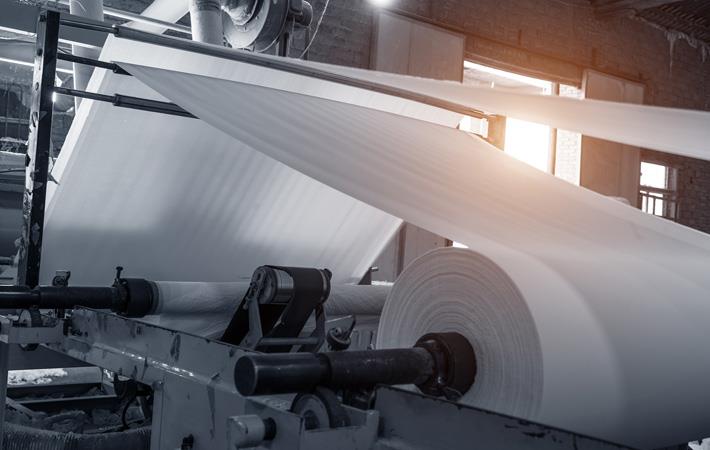Interviews
Conference on Cellulose Fibres sees 210 participants
29 Feb '20
4 min read

Pic: Shutterstock
The 1st International Conference on Cellulose Fibres attracted some 210 participants and 15 exhibitors from 26 different countries. The conference focused on markets, technologies and sustainability. Entire value chain from the lignocellulosic feedstock, dissolving pulp, cellulose fibres to applications, woven textiles and non-wovens were covered.
The conference was held during February 11-12 in Cologne, Germany.
The conference covered the entire value chain from the lignocellulosic feedstock, dissolving pulp, cellulose fibres – such as rayon, viscose, modal or lyocell and new developments, to a wide range of applications, woven textiles (clothing) and non-wovens (wipes and technical applications). All these sectors have significantly gained in dynamics A special focus was on alternative cellulose feedstocks.
Jacky Sun, from the Communication and Sustainability department of Sateri (China), global producer of viscose fibres, said: “Cellulose fibres are natural and biodegradable and have immense potential to meet global textile demand and consumer needs in an environmentally sustainable way.”
Josef Innerlohinger, head of global R and D department at Lenzing (Austria), leading producer of pulp and fibres for the textile industry, said: “There are many exciting developments going on – like textile recycling or new technologies and applications – and there is a growing demand for sustainable fibres made from renewable materials. So, I see a huge potential for cellulose fibres in various fields. But there are also some potential obstacles, which may hinder developments, where a strong cooperation is needed to overcome these topics”.
Alessandro Pelegrini, business manager at Bozzetto Group (Italy), global provider of chemical auxiliaries for the textile industry, said: “It’s a challenging time for the market, but we also see it’s the right time for new fibres, because the market and especially the retailers are looking for sustainable alternatives”.
Jukka Kantola, CEO at NC Partnering (Finland), one of the leading consultancy companies in the bioeconomy, and chairmain of the World BioEconomy Forum, said: “There is a great momentum for cellulosic textile fibres. As there are consumers' pull, brands’ expectations, industry interest, research support and environmental acceptance, I’m pretty optimistic that we will see more cellulosic fibres in the market place.”
Annamari Luukkainen, digital marketing manager of Stora Enso (Sweden/Finland), leading producer of a wide range of wood-based solutions, said: “We believe that everything that is made from fossil-based materials today can be made from a tree tomorrow.”
Many new ideas are on the way and although this path will be a challenging one, manufacturers are looking forward to future technologies and business opportunities for a sustainable bio-based and circular economy in the textile industry.
Life cycle assessments show that modern cellulose fibres have a significantly lower environmental impact than petrochemical fibres or cotton with its artificial irrigation and heavy use of pesticides. But this is not enough, as Nicole Rycroft from the environmental organisation Canopy (Canada) pointed out. In its strategy, Canopy stresses that wood for cellulose fibres may only be obtained from certified sustainable forestry, but it is even more important to use alternative feedstock sources.
Several presentations highlighted that high-quality cellulose fibres can be obtained from recycled textiles, cotton waste, agricultural by-products and even used toilet paper (in the sewage treatment plant). Thus, future cellulose textiles will meet the high demands of the recycling economy.
“It was a really successful first edition of the International Conference on Cellulose Fibres and I hope that many more will follow. The talks and accompanying discussions covered a wide area of topics related to cellulose fibres at a very high level. And there was also enough time for networking and further in-depths discussion, which also proved very valuable,” Josef Innerlohinger, Lenzing (Austria), said.
Cellulose fibres have a cumulated annual growth rate (CAGR) between 5 and 10 per cent over the last ten years. This makes cellulose fibres the fastest growing fibre group in the textile industry and also the largest investment sector in the bio-based economy worldwide. The entire cellulosic segment, including viscose staple fibres and filaments as well as acetate tow, accounts for about 6 per cent of the world market. However, this segment has continuously gained weight thanks to dynamic growth rates of viscose and lyocell fibres that have outperformed all other mainstream fibre types each year after the financial crisis. The challenge now is to achieve a balance between the ongoing capacity expansion and the growing demand.
The high growth rates are driven by the demand for natural fibres (and bottlenecks in cotton), the microplastic problem and possible bans for plastic fibres. All three drivers will continue to play a significant role in the future development of the sector.
The conference was held during February 11-12 in Cologne, Germany.
The conference covered the entire value chain from the lignocellulosic feedstock, dissolving pulp, cellulose fibres – such as rayon, viscose, modal or lyocell and new developments, to a wide range of applications, woven textiles (clothing) and non-wovens (wipes and technical applications). All these sectors have significantly gained in dynamics A special focus was on alternative cellulose feedstocks.
Jacky Sun, from the Communication and Sustainability department of Sateri (China), global producer of viscose fibres, said: “Cellulose fibres are natural and biodegradable and have immense potential to meet global textile demand and consumer needs in an environmentally sustainable way.”
Josef Innerlohinger, head of global R and D department at Lenzing (Austria), leading producer of pulp and fibres for the textile industry, said: “There are many exciting developments going on – like textile recycling or new technologies and applications – and there is a growing demand for sustainable fibres made from renewable materials. So, I see a huge potential for cellulose fibres in various fields. But there are also some potential obstacles, which may hinder developments, where a strong cooperation is needed to overcome these topics”.
Alessandro Pelegrini, business manager at Bozzetto Group (Italy), global provider of chemical auxiliaries for the textile industry, said: “It’s a challenging time for the market, but we also see it’s the right time for new fibres, because the market and especially the retailers are looking for sustainable alternatives”.
Jukka Kantola, CEO at NC Partnering (Finland), one of the leading consultancy companies in the bioeconomy, and chairmain of the World BioEconomy Forum, said: “There is a great momentum for cellulosic textile fibres. As there are consumers' pull, brands’ expectations, industry interest, research support and environmental acceptance, I’m pretty optimistic that we will see more cellulosic fibres in the market place.”
Annamari Luukkainen, digital marketing manager of Stora Enso (Sweden/Finland), leading producer of a wide range of wood-based solutions, said: “We believe that everything that is made from fossil-based materials today can be made from a tree tomorrow.”
Many new ideas are on the way and although this path will be a challenging one, manufacturers are looking forward to future technologies and business opportunities for a sustainable bio-based and circular economy in the textile industry.
Life cycle assessments show that modern cellulose fibres have a significantly lower environmental impact than petrochemical fibres or cotton with its artificial irrigation and heavy use of pesticides. But this is not enough, as Nicole Rycroft from the environmental organisation Canopy (Canada) pointed out. In its strategy, Canopy stresses that wood for cellulose fibres may only be obtained from certified sustainable forestry, but it is even more important to use alternative feedstock sources.
Several presentations highlighted that high-quality cellulose fibres can be obtained from recycled textiles, cotton waste, agricultural by-products and even used toilet paper (in the sewage treatment plant). Thus, future cellulose textiles will meet the high demands of the recycling economy.
“It was a really successful first edition of the International Conference on Cellulose Fibres and I hope that many more will follow. The talks and accompanying discussions covered a wide area of topics related to cellulose fibres at a very high level. And there was also enough time for networking and further in-depths discussion, which also proved very valuable,” Josef Innerlohinger, Lenzing (Austria), said.
Cellulose fibres have a cumulated annual growth rate (CAGR) between 5 and 10 per cent over the last ten years. This makes cellulose fibres the fastest growing fibre group in the textile industry and also the largest investment sector in the bio-based economy worldwide. The entire cellulosic segment, including viscose staple fibres and filaments as well as acetate tow, accounts for about 6 per cent of the world market. However, this segment has continuously gained weight thanks to dynamic growth rates of viscose and lyocell fibres that have outperformed all other mainstream fibre types each year after the financial crisis. The challenge now is to achieve a balance between the ongoing capacity expansion and the growing demand.
The high growth rates are driven by the demand for natural fibres (and bottlenecks in cotton), the microplastic problem and possible bans for plastic fibres. All three drivers will continue to play a significant role in the future development of the sector.
Fibre2Fashion News Desk (SV)
Popular News
Leave your Comments
Editor’s Pick
































-Ltd..jpg?tr=w-120,h-60,c-at_max,cm-pad_resize,bg-ffffff)





.jpg?tr=w-120,h-60,c-at_max,cm-pad_resize,bg-ffffff)
.jpg?tr=w-120,h-60,c-at_max,cm-pad_resize,bg-ffffff)






